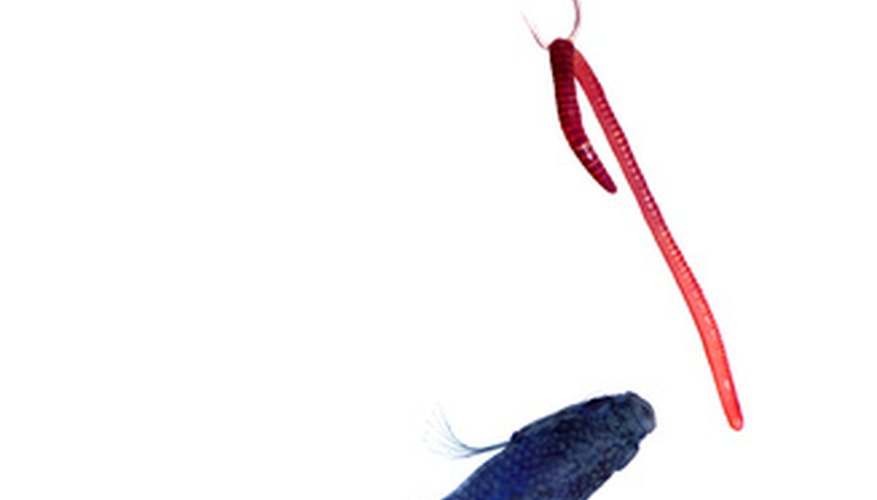Midge larvae, also known as blood worms, are a nutritious, delicious treat for fish. The larva appear very similar to segmented worm and have a bright pinkish red colour. Live blood worms are often used for fishing, but they are also sold freeze dried and frozen for household aquarium and pond use. You can establish your own blood worm farm for personal use or profit.
Acquire organic material--dried leaves, soil, twigs and similar items. Store this in a convenient place while you assemble the other supplies.
Prepare water. You can use dechlorinated tap water or clean aquarium water. To dechlorinate water allow it to sit in a container overnight at least. The chlorine will evaporate.
- Midge larvae, also known as blood worms, are a nutritious, delicious treat for fish.
- To dechlorinate water allow it to sit in a container overnight at least.
Assemble your containers. You can use tanks or even a plastic shoebox. (If you just want a personal supply for a fishing trip you may only need a small container, but if you have an aquarium or pond full of fish or want to sell blood worms, you'll need multiple medium-size to large tanks.) Insert a water pump and a filter in each tank.
- You can use tanks or even a plastic shoebox.
- ( Line the bottom of your tanks with a thin layer of organic material.
- (
Line the bottom of your tanks with a thin layer of organic material. (Don't use green leaves or grass because these take longer to decompose and smell worse.) Add a tiny amount of waste such as chicken or cow manure to the mix, then fill with water and turn on the pump.
- You can use tanks or even a plastic shoebox.
- ( Line the bottom of your tanks with a thin layer of organic material.
- (
While the organic material settles and the pump keeps the water in motion, preventing mosquitoes from laying eggs, you can start acquiring midge eggs. Leave the tanks outside (away from your home because they smell) in a warm area. Wait a few weeks for midges to lay eggs above the water. This may take a while, but you can also find the eggs in rivers, creeks, standing water, etc. (Avoid water that may be contaminated; blood worms can carry the contamination without dying but may poison fish.) Midge eggs resemble a pale dust floating on the surface of the water. Your best option is to look for a swarm of midges and scoop up a bucket or two of water before the eggs sink, then take the water home and divide it up among your tanks.
- While the organic material settles and the pump keeps the water in motion, preventing mosquitoes from laying eggs, you can start acquiring midge eggs.
- Your best option is to look for a swarm of midges and scoop up a bucket or two of water before the eggs sink, then take the water home and divide it up among your tanks.
- You can use tanks or even a plastic shoebox.
- ( Line the bottom of your tanks with a thin layer of organic material.
- (
After a few weeks you should have enough to start harvesting. You should do this at night using a net. You can either store them in water for immediate use, freeze or dry them. Don't take all the worms. At least a few should be allowed to pupate to keep your farm going.
- After a few weeks you should have enough to start harvesting.
- At least a few should be allowed to pupate to keep your farm going.
In about two to three weeks you should start seeing a few of your worms prepare to pupate. Adult midges survive for two to three days. They do not eat and spend all their time mating. Allow this to occur over your tanks whenever possible; this will help you maintain a ready supply of blood worms.
WARNING
The larva can cause allergic reactions (such as conjunctivitis, rhinitis or urticaria) in sensitive people. Wear plastic gloves and protective goggles.
